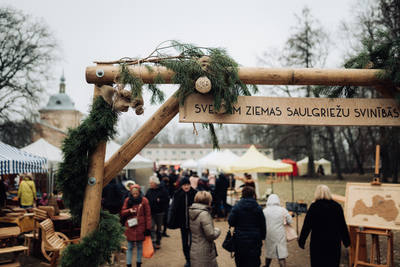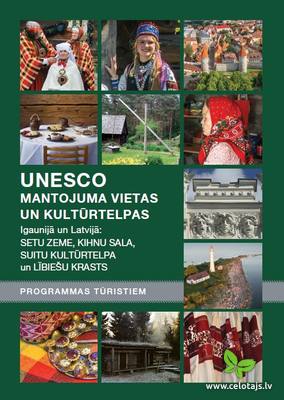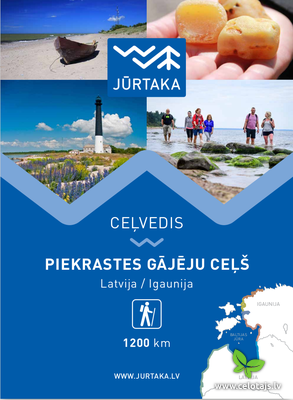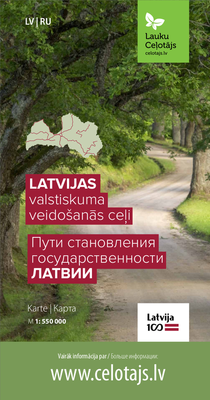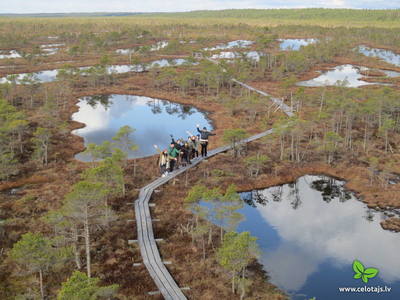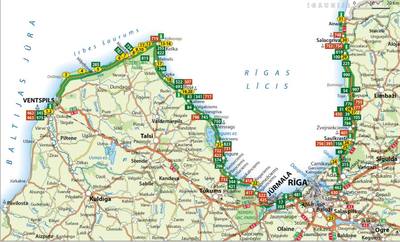Unterkunft Nachrichten
Unterkunft Nachrichten
On December 21, Valmiermuiža will gather local producers from all around Latvia, offering homemade bread, cheese, smoked goods, lamprey, honey, herbal teas, spices, homemade wine, beer, juice, candied fruit, hard candy, gingerbread cookies and lots more.
Everything offered at the fair is natural and, hence, healthy, made by locally grown plants or gathered in the clean forests and meadows of Latvia. Local craftsmen will offer woollen socks, mittens, crochets, hammered work, wooden toys and jewellery to give them as presents to friends and relatives. Items made by local craftsmen would make our ancestors proud, as they have been made according to the best traditions.
Along the fair all visitors will have an opportunity to enjoy a varied culture programme, including activities to get better acquainted with the traditions of the annual customs, learn songs and games, master some of the traditional crafts and much more.
According to an old Latvian belief, nine dishes should be served for the festive Christmas meal. The hostess at “Vīnkalni” country house will teach visitors how to cook three Latvian traditional dishes:
‘Biguzis’ – a traditional country dessert with rye bread, whipped cream and fresh berries. Its ingredients are rye bread, cranberries or lingonberries, honey, cinnamon and whipped cream. Mature rye bread is crushed or grated. Cranberries are squeezed in juice, diluted with water, sweetened with honey and poured into bread. When the bread has sucked into the liquid, it is topped with whipped cream.
Fresh cheese – made from cow's milk adding various herbs and spice (cumin, hemp, greens).
Buns and cakes. It is said that in Latvian folk tradition round cakes and buns in the form of a crescent were baked to honour the Sun and the Moon. Today they are often baked for celebrations and festivities. The traditional Latvian buns ‘pīrāgi’ are made from yeast dough, are 5-13cm long in a curved form like a crescent. They are filled with bacon and onions or with cottage cheese or apples.
Those who sell and those who buy are looking forwards to meet on the December 15 Christmas market at Straupe! There will be lots of seasonal treats and goodies for your festive table. To name just a few: fresh carp, a specially prepared quince elixir, vacuum packed beef, lamb, turkey, freshly cooked smoked meat, gingerbread dough, candy, marmalade, tea and honey jars. It will be a great and rich market that will fulfil all your wishes in the run-up to Christmas!
The programmes allow visitors to experience four unique and different ethnographic regions where authentic traditions are still part of peoples’ everyday life. They are: Setomaa region (Estonia), Kihnu island (Estonia), Suiti cultural space (Latvia) and the Livonian coast (Latvia) presenting UNESCO heritage in the following ways:
UNESCO proclaimed Intangible Cultural Heritage:
- SETO LEELO, Seto polyphonic singing tradition;
- KIHNU cultural space;
- SMOKE SAUNA tradition in Võromaa;
- SUITI cultural space.
On the National List of Intangible Cultural Heritage of Latvia: the LIVONIAN Cultural space. Livonian community has made a commitment to prepare a nomination for UNESCO Representative List of the Intangible Cultural Heritage of Humanity.
Available in languages: English, Estonian, Latvian
Der Baltische Küstenwanderweg ist ein Teil des Fernwanderwegs E9 entlang der Ostseeküste, der an der lettisch-litauischer Grenze im Dorf Nida in Lettland beginnt und am Tallinner Hafen in Estland endet. Die ~ 1200 Kilometer des Baltischen Küstenwanderweges sind in 60 einzelne Eintageswanderungen eingeteilt (12 – 25 km). Jede Tageswanderung hat eigene Beschreibung. Zusätzlich sind drei Doppelseiten des Reiseführers den estnischen Inseln gewidmet, deren Besuch als Fortsetzung der Wanderung eingeplant werden kann. Andererseits kann man sich auch einfach der Entspannung hingeben, indem man das kulturgeschichtliche, kulinarische Angebot und die behagliche Atmosphäre der Inseln genießt. Die Reiseführer werden in 5 verschiedenen Sprachen (Englisch, Lettisch, Deutsch, Estnisch und Russisch) veröffentlicht. In begrenzter Anzahl sind englische, lettische sowie deutsche Versionen, in gedruckter Form, in unserem Büro in Riga, Kalnciema Straße 40, erhältlich.
>>> Hier kostenlos herunterladen (PDF, ~64MB)
Website: coastalhiking.eu
Facebook: facebook.com/jurtaka
Instagram: instagram.com/jurtaka
Siehe alle Nachrichten zu "Die Publikationen des "Lauku ceļotājs""
On the way to Latvia’s centenary, we at Baltic Country Holidays have produced a new tour map inviting to travel along 7 routes of Latvia’s Statehood: the Baltic’s Road, the Freedom’s Road, the Mara’s Road, the Liv’s Road, the Daugava’s Road, the Jacob’s Road, the Light’s Road. The routes will allow you to learn about aspects of Latvia’s history, personalities, places and events that facilitated the establishment of the state and the emergence of its national identity.
The publication includes a map with the 7 routes marked and briefly described, 80 attractions along the routes and 85 open farms that hold the sign Latvian Heritage.
The 7 Routes of Latvia’s Statehood have been developed within the programme for celebration of the centenary of Latvia as a state. The key message of the centenary celebration is „I am Latvia” focusing on people as the core value of the state. They shape today’s life in the country and, together with their young generation, they lay foundations for the future.
The map is available at the office of „Lauku ceļotājs”, 40 Kalnciema str. (3rd floor), Riga (week days at 09:00 – 17:00).
Languages: Latvian, Russian, English, German.
The project is supported by State Culture Capital Foundation.
Siehe alle Nachrichten zu "100. Jahrestages der Republik Lettland"
Aufgrund der grossen Nachfrage hat der Landestourismusverband Lettlands “Baltic Country Holidays" ("Lauku celotajs") wiederholt die Broschüre „Lettische Gerichte und Getränke“ herausgegeben. In dieser überarbeiteten un aktualisierten Fassung der Publikation geht es um traditionelle lettische Gerichte und moderne Küche. Sie soll Ihnen als Inspiration dienen eine kulinarische Reise nach Lettland zu unternehmen. Auch vor Ort wird sie Ihnen während des Restaurantbesuchs beim Bestellen der kulinarischen Spezialitäten der Region eine grosse Hilfe sein.
We have come up with five new touring routes that offer colourful holiday experiences across three Baltic Sea states – Latvia, Estonia, and the South Coast region of Finland. The itineraries combine city and rural experiences offering the best highlights in each country and UNESCO heritage in all its diversity - from Art Nouveau architecture in capital cities to traditional smoke sauna in Estonian countryside. The countryside attractions are specialised in hospitality service and offer insight in small self-sustained farms, local food, arts and crafts, and nature while staying at comfortable guest houses, rural estates with gourmet restaurants or charming country homesteads that make you feel happy in simplicity and sincerity of real country life and home-made meals.
The tours can be organised on your own contacting the sites directly, or contacting Baltic Country Holidays for arrangement of services or modifications of the itineraries. Read further for itinerary descriptions and maps:
Am 18. November 2018 wird der lettische Staat sein hundertjähriges Jubiläum feiern. Die Hundertjahrefeier ist das ehrgeizigste Ereignis in der modernen Geschichte Lettlands. Mehr als 800 verschiedene Veranstaltungen in Lettland und 70 anderen Ländern auf der ganzen Welt sind in den Jahren von 2017 bis 2021 geplant. Durch Hauptereignisse der staatlichen Entstehungsgeschichte und Persönlichkeiten wird Geschichte Lettlands erzählt.
Der lettische Landestourismusverband "Lauku celotajs" hat neue Tourismusrouten zum Bereisen und Kennenlernen von Lettland erstellt und veröffentlicht. Es sind 7 Wege der Staatlichkeit - Weg der Liven, Jakob-Weg, Weg der Freiheit, baltischer Weg, Weg der Daugava, Weg des Lichtes und Mara-Weg.
Did you know that EU is the world’s largest cheese market and there are over 240 varieties of cheese that are protected under EC schemes for protection of agricultural products and food staffs? Three quality logos attest to their specific traditions and qualities: the Protected Designation of Origin (PDO), the Protected Geographical Indication (PGI) and the Traditional Speciality Guaranteed (TSG).
Here you will find information on how 6 countries cooperate to promote cheese as a reason for travelling - going on a cheese tasting tour in home country and abroad. Touring routes, information about cheese festivals, types and sorts of cheese and cheese producers in Canary islands, Malta, Bulgaria, Slovenia, Italy and Latvia.
Find more information on Latvian „Cheese master” routes and cheese farms in our website www.celotajs.lv/lv/c/brand/cheese. Many of these participate in the Countryside Open Days event in May 27-28 this year. Check also the „Tasty cheese tour” website http://www.tastycheesetour.eu.


